





Back muscles
Muscles of a back are rather numerous and are located in two layers – deep and superficial.

To superficial muscles of a back the muscles attached to a belt of an upper extremity and shoulder and also belong to edges:
- trapezoid muscle;
- the broadest muscle of a back;
- the muscle raising a shovel;
- big and small rhomboid muscles;
- Gear muscles.
Deep muscles of a back lie in three layers: deep, average and superficial. The deep layer is formed by suboccipital, intercross and interspinal muscles. The center is presented by a cross and awned muscle. The periblast is presented by repair muscles of a neck and the head, and also the muscle straightening a backbone. Muscles of this layer belong to type of strong muscles and perform static work (support the correct vertical position of a backbone).
Why back muscles hurt?
Practically each adult at least once asked for medical care with complaints that back muscles hurt. Can be the reasons of these pains:
- Considerable muscular exercise. It can be connected not only with performance of hard physical activity, sports activities. Not smaller load of muscles of a back is rendered also by long finding of the person in forced situation. Therefore drivers or, for example, programmers are quite often hurt by back muscles. For prevention of static pains it is necessary to do during the working day several small breaks during which carry out the physical exercises directed to strengthening of muscles of a back;
- Injuries of muscles of a back (bruise, stretching) – most often arise at a training of muscles of a back when on the unprepared and not warmed muscles too big loading is given at once;
- Miositis (inflammation of muscles) – one of the most frequent reasons of dorsodynias. This disease usually has a long current. Nature of pains aching. At a palpation (palpation) of the affected muscles their consolidation and morbidity comes to light. At the people having diseases of a metabolism and some persistent infections, the miositis can be combined also with morbidity of joints;
- Lumbago – emergence acute, a thermalgia in lumbosacral area. Most often the overstrain of muscles of a back is the reason of development. The attack of pains usually arises at the time of a raising of weight or sharp change of position of a body, for example in attempt to reach something. The lumbago can arise also at a training of muscles of a back when the exercise stress too high or the main stage of a training begins without the corresponding warm-up of muscles of a back;
- Radiculitis – arises against the background of the acquired or inborn changes both the backbone, and its copular device (osteochondrosis, intervertebral hernias). The dorsodynia is usually unilateral, can be stupid or acute, amplifies at change of position of a body, sneezing, cough. Quite often it иррадиируетв other body parts, and also can be combined with paresthesias (disturbances of sensitivity of skin). For prevention of attacks of radiculitis it is very important to pay much attention to strengthening of muscles of a back, formation of so-called muscular "corset" which supports a backbone in the correct physiological situation, removes from it an excess static load. However in the acute period of a disease the training of muscles of a back is contraindicated, and it is possible to start it only after full stopping of a pain syndrome. Occupations physiotherapy exercises, swimming are useful.
Is well-known the fact that quite often muscles of a back hurt also people often subject to a stress or a nerve strain. The stress leads to a muscular spasm which is the reason of pain. In turn this pain strengthens a muscular spasm. As a result "vicious circle" turns out. To break off it there is not enough only the anesthetizing drugs. In most cases the doctor appoints also soothing medicines.
The 74-year-old resident of Australia James Harrison became blood donor about 1000 times. It has a rare blood group which antibodies help to survive the newborn with a severe form of anemia. Thus, the Australian saved about two million children.

Urogenital candidiasis (milkwoman) – a fungal infection which annoys unpleasant feelings in the field of generative organs, сопр...
Section: Articles about health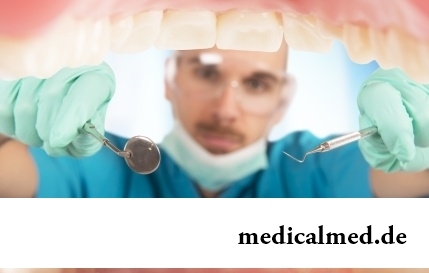
White teeth and the Hollywood smile – a dream of many people. Long time was considered that the plaque on teeth and change of their color – destiny of those who incorrectly eat smokes and badly brushes teeth. But the paradox is available: at everything the variety of toothpastes existing today...
Section: Articles about health
Some people consider what for medicine of the 21st century of secrets in the field of health of the person almost does not exist. It absolutely not so. The more answers scientists receive, the more the most difficult questions are raised for them by life. Besides, there are diseases which are not explained with science in any way of which existence people know for 100-150 years. These diseases meet not so often, but from some of them nobody is insured....
Section: Articles about health
All the known slogan "Protect Men!" arose not from scratch. In a sense, the nature created representatives of strong...
Section: Articles about health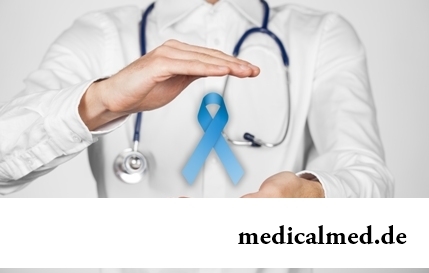
Aspirin (acetylsalicylic acid) – one of those drugs which are known literally to all. It is available in each home first-aid kit, and many accept it at the first signs of an indisposition, often without having a fair idea of properties and a therapeutic eff...
Section: Articles about health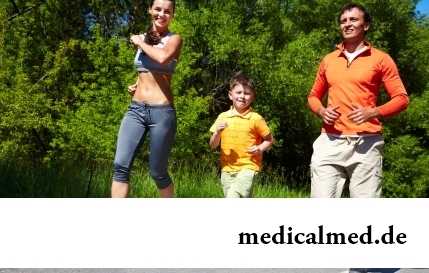
Season of activity of viral infections in the heat. Everyone can get sick, but probability of this unpleasant event it is possible and it is necessary to minimize. There is a number of rules, following to which will help or to avoid absolutely infection with flu or a SARS, or to have an illness benign and without essential complications. About ways of prevention of seasonal infections the speech in this article will also go....
Section: Articles about health
Wood louse – the ordinary-looking unpretentious plant extended in all territory of our country. It quickly expands, and sometimes for...
Section: Articles about health
It is possible to find the extensive range of fruit and vegetables in modern shops. Russians already got used that on counters there is not only a seasonal domestic production, but the vegetables and fruit which are grown up in the countries with more comfortable conditions at all seasons of the year...
Section: Articles about health
A lot of things depend on a condition of a backbone in a human body, a backbone - not only a support for a body, it also a receptacle for a spinal cord, that is why malfunctions with a backbone are so dangerous. To treat rachis diseases very difficult and long, it is much simpler and more correct not to bring to a disease. Conforming to the rules provided in this article it is possible to avoid the majority of the problems connected with a backbone including those which are considered to be age, but a cat...
Section: Articles about health
Tuberculosis – a serious infectious disease which development is caused by mycobacteria (Koch's bacilli). The illness is known from a deep d...
Section: Articles about health
Scientists have no unambiguous opinion on a proximate cause of emergence of a carcinoma cutaneum today. Only the factors promoting development of this illness are precisely established. Treat them: long impact on skin of ultraviolet rays, radioactive...
Section: Articles about health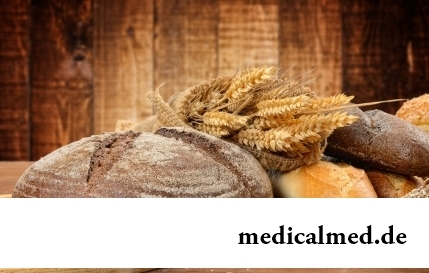
There is an opinion that at low temperatures safety of products is ensured longer and better thanks to what the refrigerator is considered the most suitable place for storage of food. In most cases it is fair, however there is a number of products for which low temperatures – the main reason of their premature damage. Storage in the refrigerator leads to their bystry rotting, emergence of a mold, is followed by loss of vitamins and tastes. What products it is better to remove...
Section: Articles about health
The state of health of the person depends on many factors. One of the most important is the constant but which is not exhausting, motive...
Section: Articles about health
Helminthosis is one of the most widespread diseases. Statistically, any species of helminths infected every third inhabitant of the planet. Most of specialists even consider these data strongly underestimated: some uninvited "cohabitants" of N...
Section: Articles about health
The phenomenon of improvement of a condition of the patients at administration of drugs who are not containing active agents, so-called effect of placebo is known long ago. At the end of the 18th century the American doctor Perkins began to treat people the "miracle" sticks made of alloy of steel and brass. Was for several minutes to press such subject enough to a sore point that it became much easier for the patient. Having suspected Perkins of charlatanism, his colleagues tried to repeat "miracle" by means of sticks, steles...
Section: Articles about health
Among a set of the perfumery and cosmetic goods which are released today the special group is made by the means containing anti-bacterial...
Section: Articles about health
Visit of doctors – business not the most pleasant, and many people do not hurry to undergo necessary planned inspections. Such behavior is extremely thoughtless and improvident. Our health is necessary not only to us: wellbeing of darlings, children, grandsons and престар...
Section: Articles about health
Statistically cystitis 25-30% of women up to 40 years have. With age this indicator raises, besides many do not get to statistics because do not see a doctor. The most sad that after the regular visits to doctors, long reception of antibiotics and life in the mode "it is necessary to take care" cystitis all the same is returned to a half of women. Symptoms of cystitis are unambiguous and it is impossible to confuse them with anything: bladder pain, burning at an urination, frequent desires to go to a toilet, a vynuzhd...
Section: Articles about health
Life of the modern child is extremely active and difficult. Information strain which is experienced by the school student and did not dream the pupil...
Section: Articles about health
What will only not be thought up by persons interested to have a beautiful figure. Here the last innovation – for weight loss needs to be eaten greasy food. Let's understand whether there is at a fatty diet common sense....
Section: Slideshow
Cold, puffiness of a nose, itch, the watering eyes - characteristic symptoms of the allergic rhinitis resulting from hit of allergens (pollen, house dust, hair of animals, etc.) on a mucous membrane of a nose. Unpleasant feelings often give trouble, serving as the reason of a headache, an acrimony, sleep disorders, and in certain cases and the states close to a depression. How to get rid of undesirable satellites of a disease if near at hand there are no antiallergic...
Section: Articles about health
For anybody not a secret that our country is one of the most "drinking" in the world. At clear understanding of that the use of strong...
Section: Articles about health
Cold – a state known to everyone which is followed by cold, cough, high temperature, a pharyngalgia. Often the first that we begin to do in hope again to become healthy – to accept medicines which are not always harmless, then...
Section: Articles about health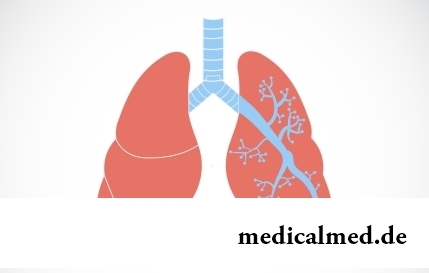
They say that to ensure health and longevity of people it is obliged. Really, at competent approach to these questions, minimization of an adverse effect of many factors does not represent a special problem. Practically everyone has an opportunity to play sports, to pick up an optimum operating mode and rest, to adjust healthy food, to refuse addictions. It is more difficult to exclude hit in an organism of harmful substances through a respiratory organs: not all are able to afford to live in the area with хо...
Section: Articles about health
Feeding by a breast - the integral part of ideal motherhood allowing to come into contact with the kid and to create since early years...
Section: Articles about health
The mankind knows that some toxins at intake in the minimum quantities have therapeutic effect from an extreme antiquity. Many substances recognized poisonous are applied in the medical purposes also today, being the main deystvuyushch...
Section: Articles about health
For anybody not a secret that the modern person eats not as his ancestors. For the last 100 years in broad access there were absolutely new products which are result of use of the latest technologies in food production. Significantly ways of storage and transportation of food ingredients changed, and people of the whole world had an opportunity to regularly use those products about which their grandfathers and grandmothers did not even know....
Section: Articles about health
